On 11 March 1831, Johann Adam Heckel and Carl Almenräder founded the J. A. Heckel and Carl Almenräder bassoon factory. The two founders first met in 1829 at the Mainz Music Publishing House, Schott. The first bassoons by Heckel and Almenräder were also made for Schott and therefore were stamped with B. Schott Fils à Mayence.
Founder of the Bassoon Factory
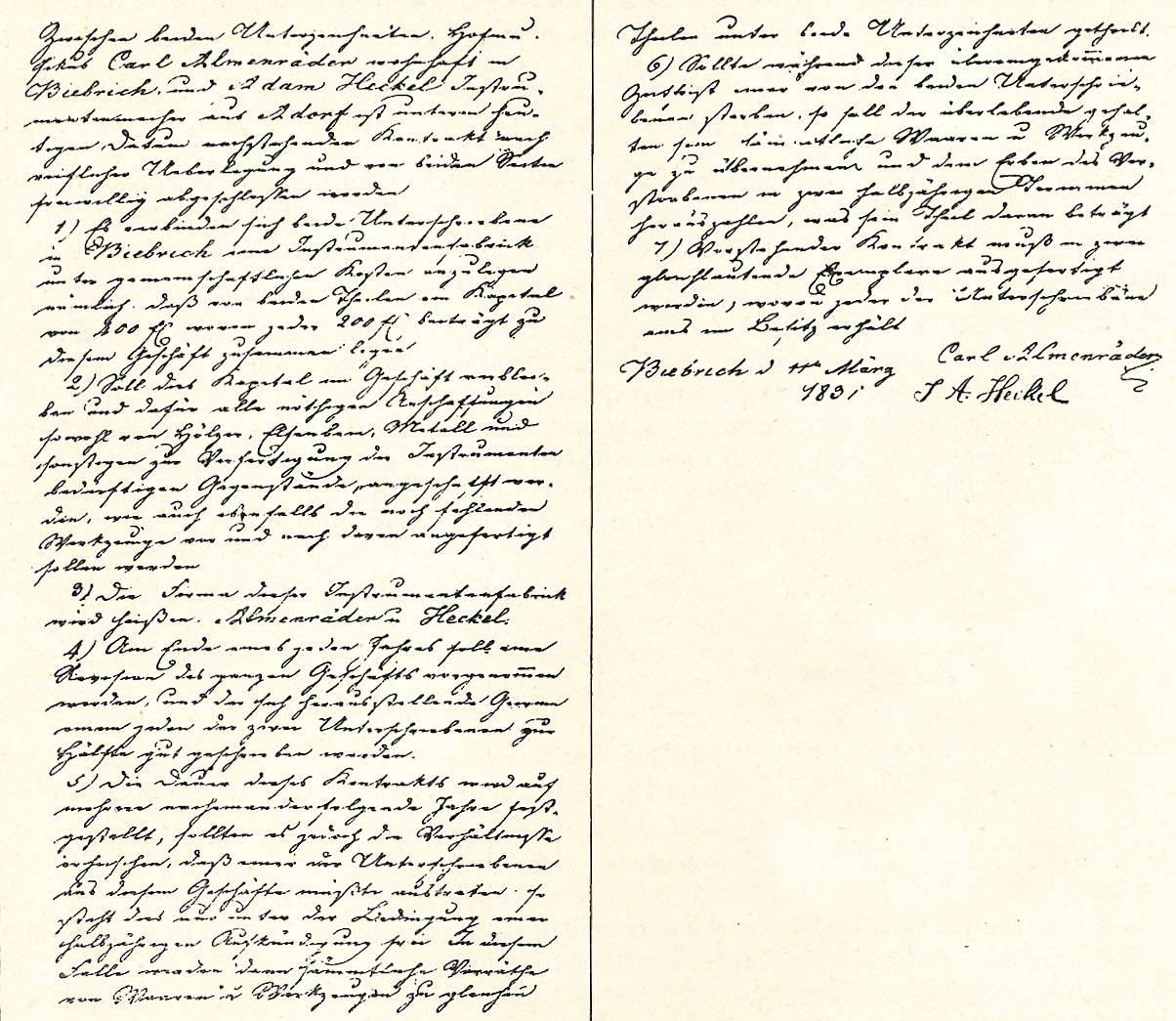
Great Exhibition, London
In 1851, Johann Adam Heckel visited the first World’s Fair in London, the Great Exhibition. Here he made important business contacts and received his first diploma.

Exhibition at the Académie Nationale
In 1852 he participated in the exhibition at the Académie Nationale in Paris. At this exhibition, Johann Adam Heckel received his second diploma.
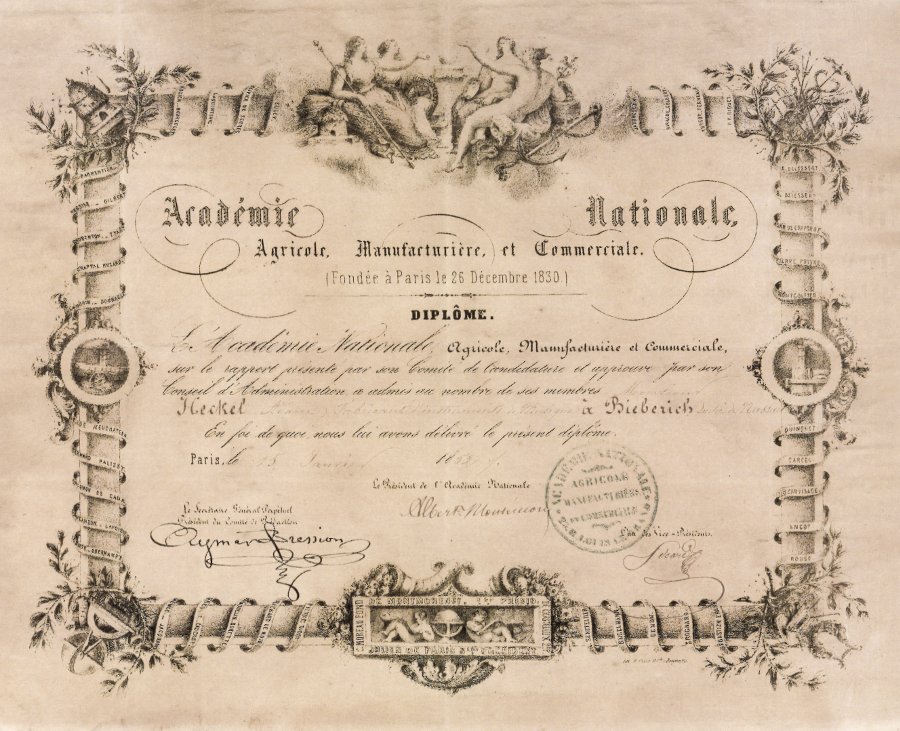
Connection to the composer Richard Wagner
In 1862 the composer Richard Wagner was in Biebrich, where he lived in a villa on the Rhine while working on his opera Die Meistersinger. Johann Adam Heckel took advantage of this opportunity to introduce Wagner to his instruments. Wagner’s visit to Johann Adam’s workshop marked the beginning of a close connection between Wagner and the Heckel family.
Number #3001 and the smallest contrabassoon
In 1877, Wilhelm Heckel first began to number the Heckel instruments, the first numbered bassoon was #3001. Wilhelm surpassed the number of instruments produced by Heckel by this time, which amounted to around 3000 pieces.
In 1877, Wilhelm Heckel and his workshop master, Friedrich Stritter, succeeded in building the smallest contrabassoon to date. This instrument was characterised by its low height and weight. Therefore, it was very well suited to marching and so was predestined for military music. Wilhelm Heckel patented the redesign of the contrabassoon in the same year.
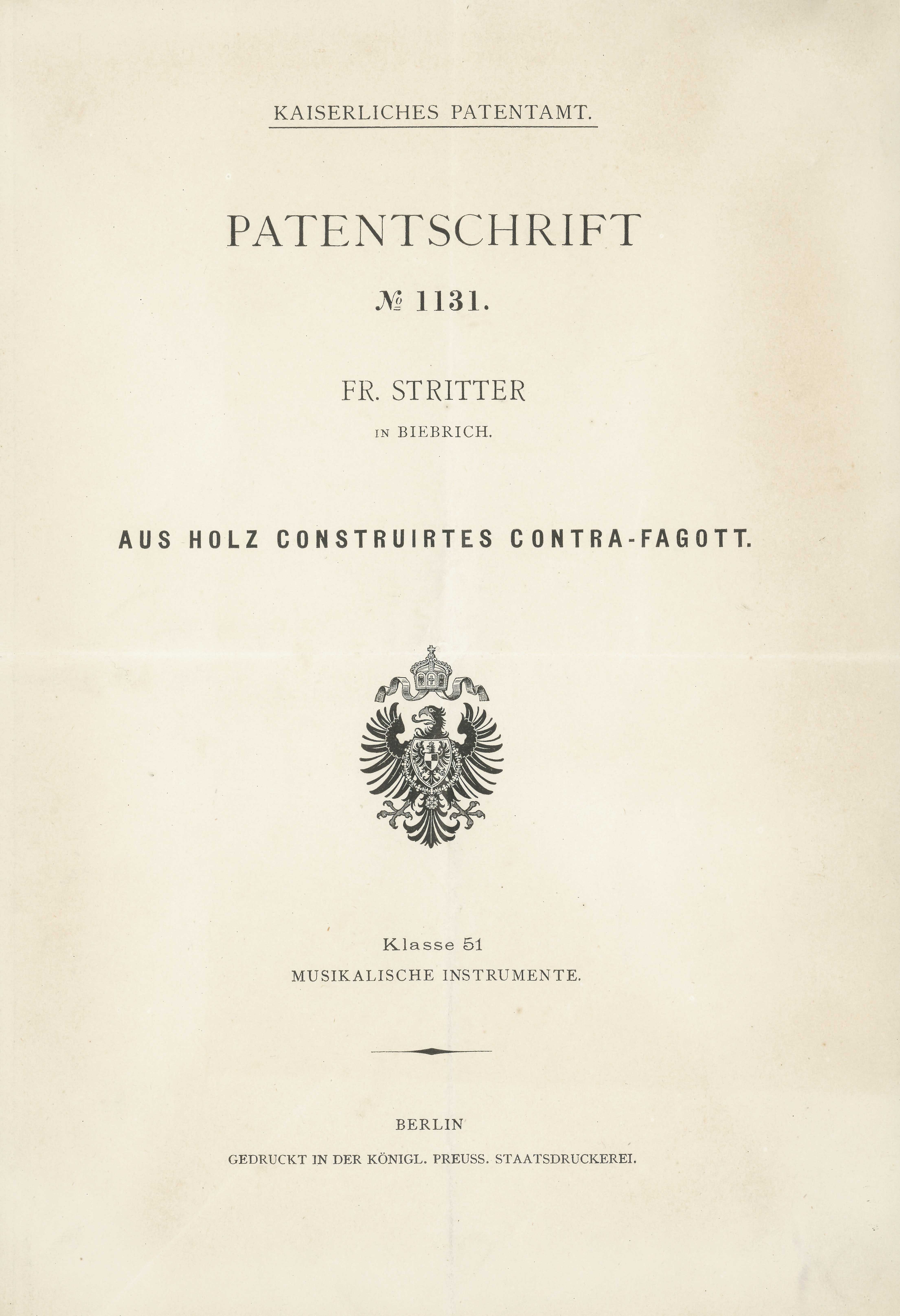
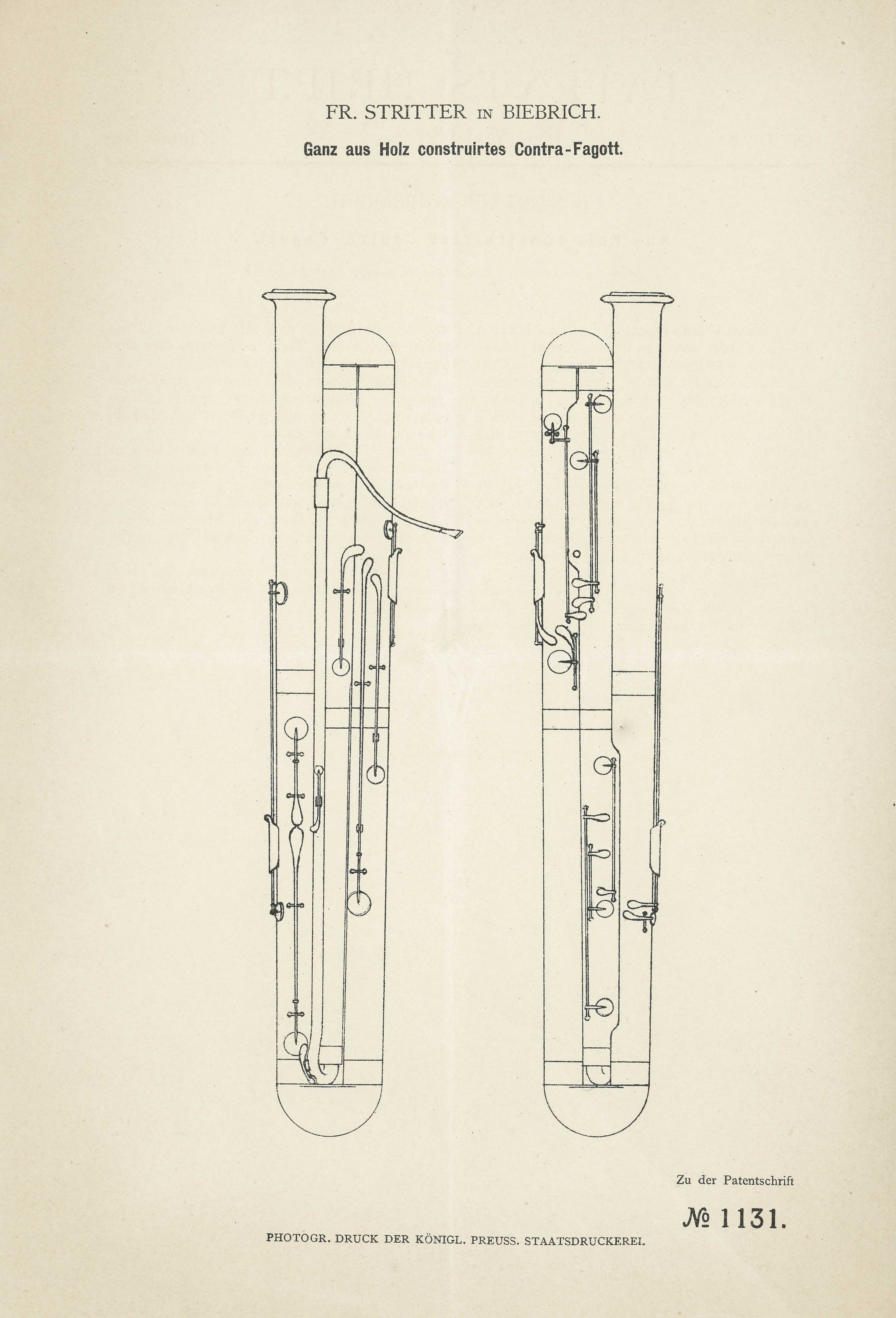

Development of the Heckelphone
In October 1879, Wilhelm Heckel was appointed to Bayreuth at the instigation of the Viennese Court Chapel Master, Wilhelm Jahn. There he met with Richard Wagner to present to him his newly constructed bassoon and, for the first time, his newly constructed contrabassoon. Richard Wagner, who was enthusiastic about the Heckel instruments, mentioned at this meeting that he was still missing a final element within the double-reed instruments. He longed for an instrument whose tone lay one octave lower than the oboe and at the same time had the soft and powerful sound of the Alpenhorn. Wilhelm Heckel and his sons then set to work to develop an instrument with such a sound and developed the heckelphone in 1904.
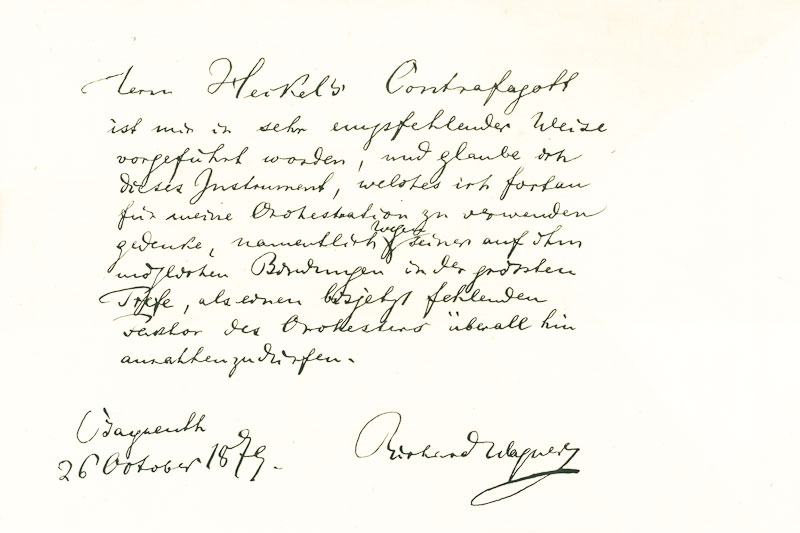
Predicate of a royal court instrument maker
In 1881, Wilhelm Heckel received the award of the royal court instrument maker from the King of Prussia.
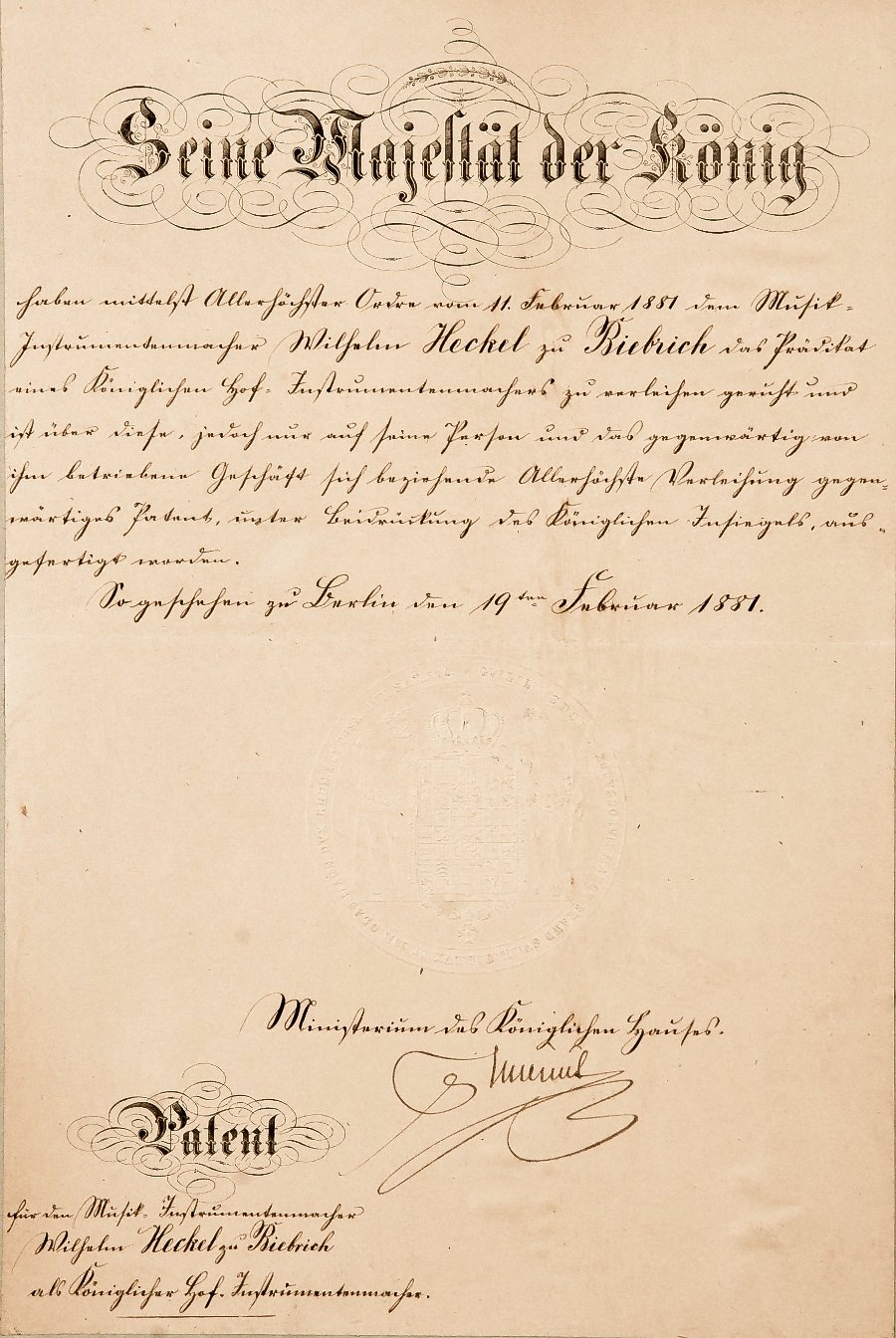
Patent application
In 1889, Wilhelm Heckel filed for another patent, which was for one of the most important inventions in the field of bassoons. At that time, a common problem with woodwind instruments was that the moisture generated during play penetrated the pores of the wood and gradually destroyed the bore of an instrument. Wilhelm Heckel counteracted this by lining those parts that were most affected by moisture. For the first time he began lining the wing joint and narrow bore of the boot joint with a rot-resistant material, natural rubber. Natural rubber was ideally suited to this purpose, because it created a mirror-smooth and pore-proof inner wall, which in turn meant a simple response and a brilliant tone could be generated.
In the same year, Wilhelm Heckel also patented the arrangement of octave keys on the contrabassoon. Thus, the sounds from the upper D upwards could also be reached, which made it easier for the musician to play faster passages.
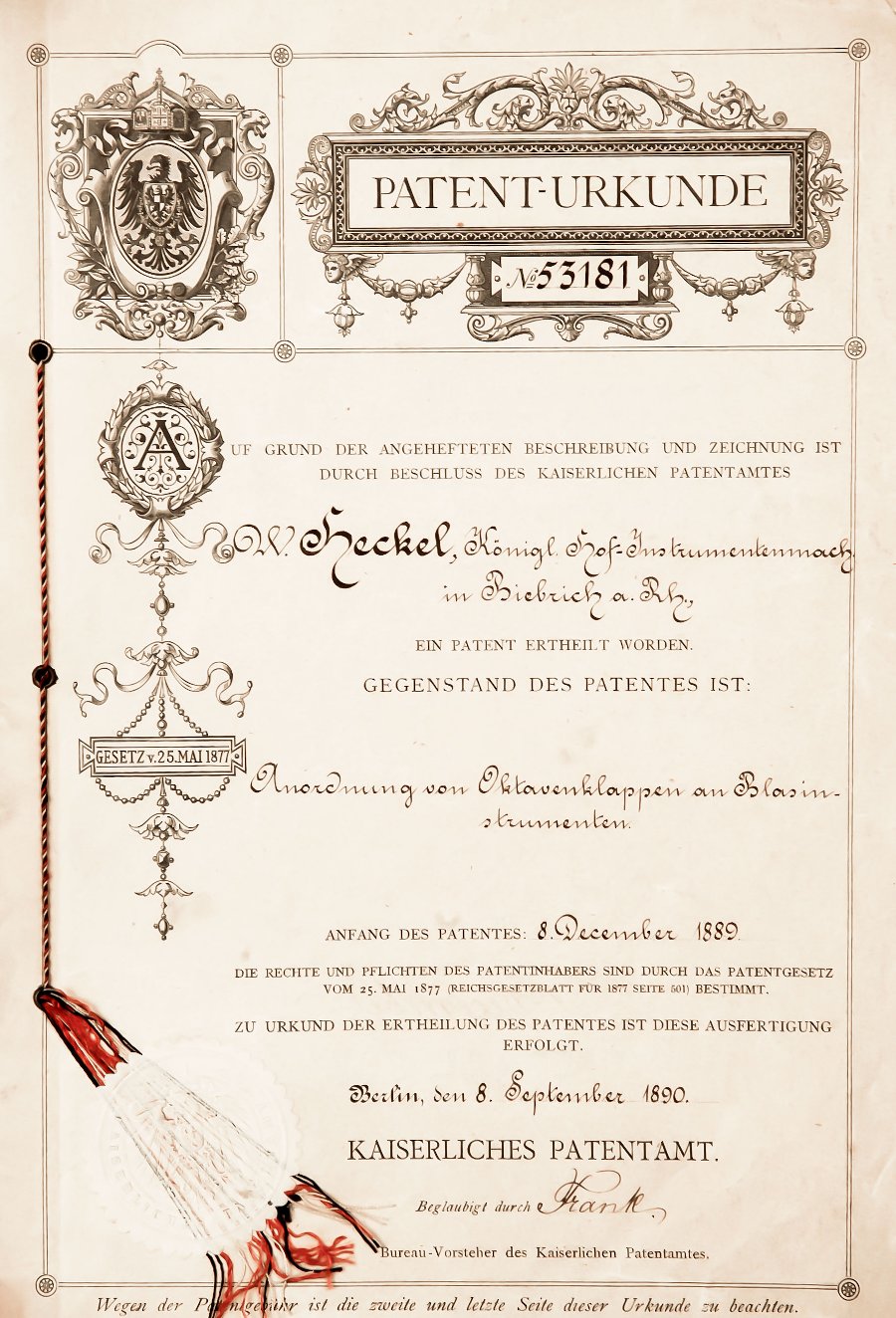
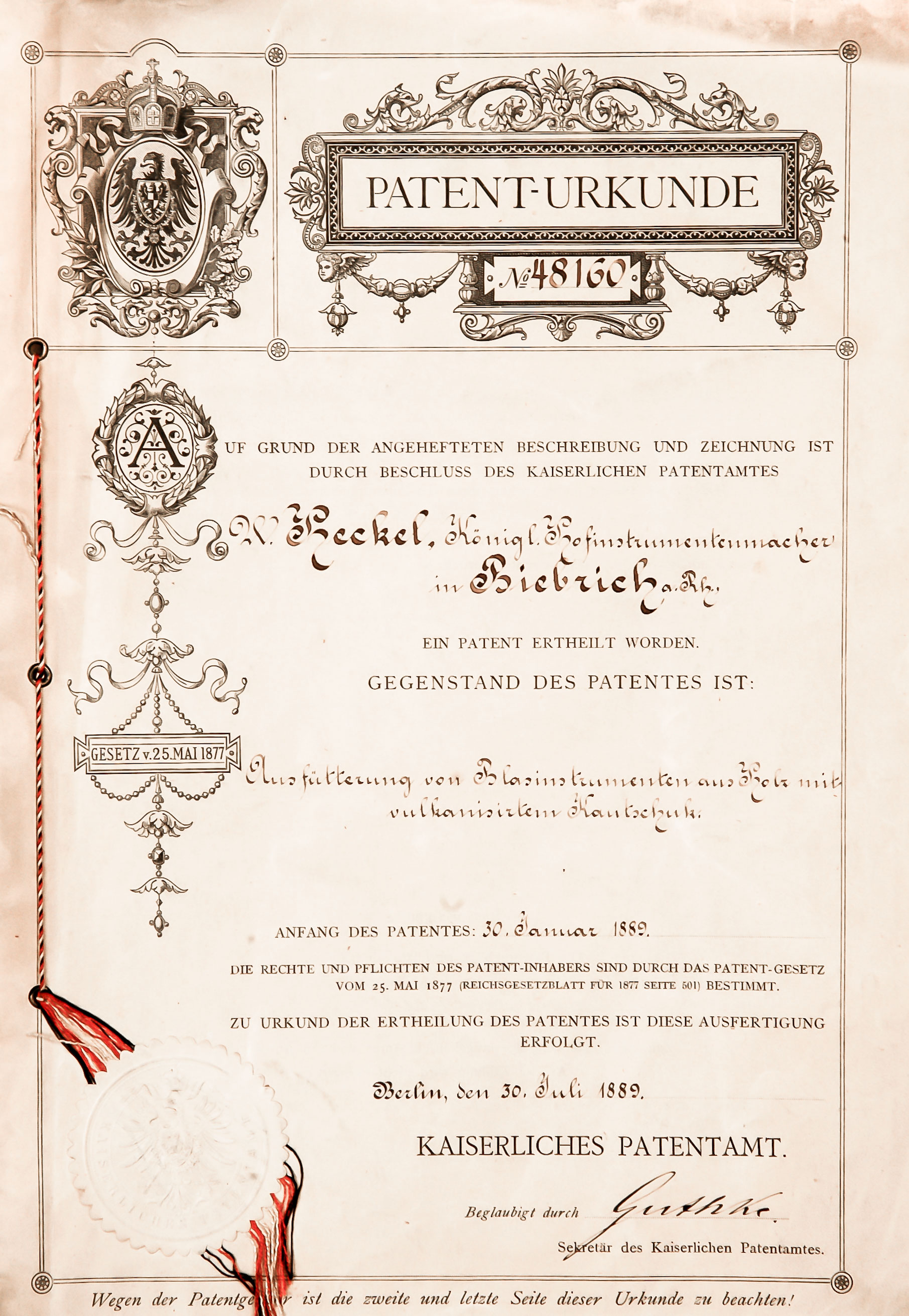
On 18 December 1889, the patent application of the Heckel clarina was made. The instrument, which was developed by Wilhelm Heckel and his son Wilhelm Hermann, unfortunately did not prevail. There- fore, only a small number of about 130-150 were sold.
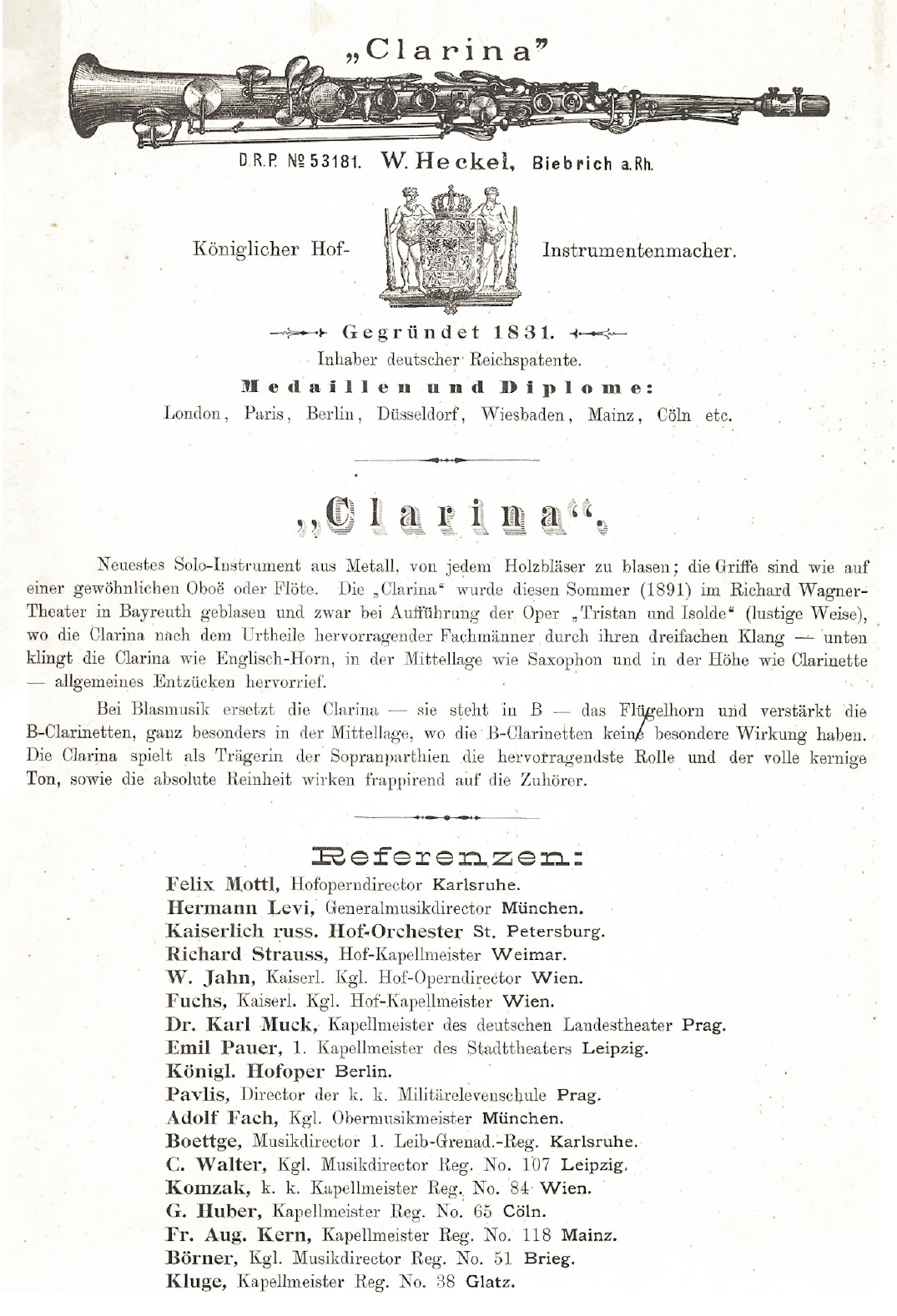
Connection to the composer Richard Strauss
On 25 August 1900, the composer Richard Strauss visited the Heckel company for the first time. From this point, a lively exchange of ideas between Strauss and Heckel began and was never broken off. The redesign of the piccolo heckelphone and, later, the terz heckelphone was developed together with Richard Strauss.
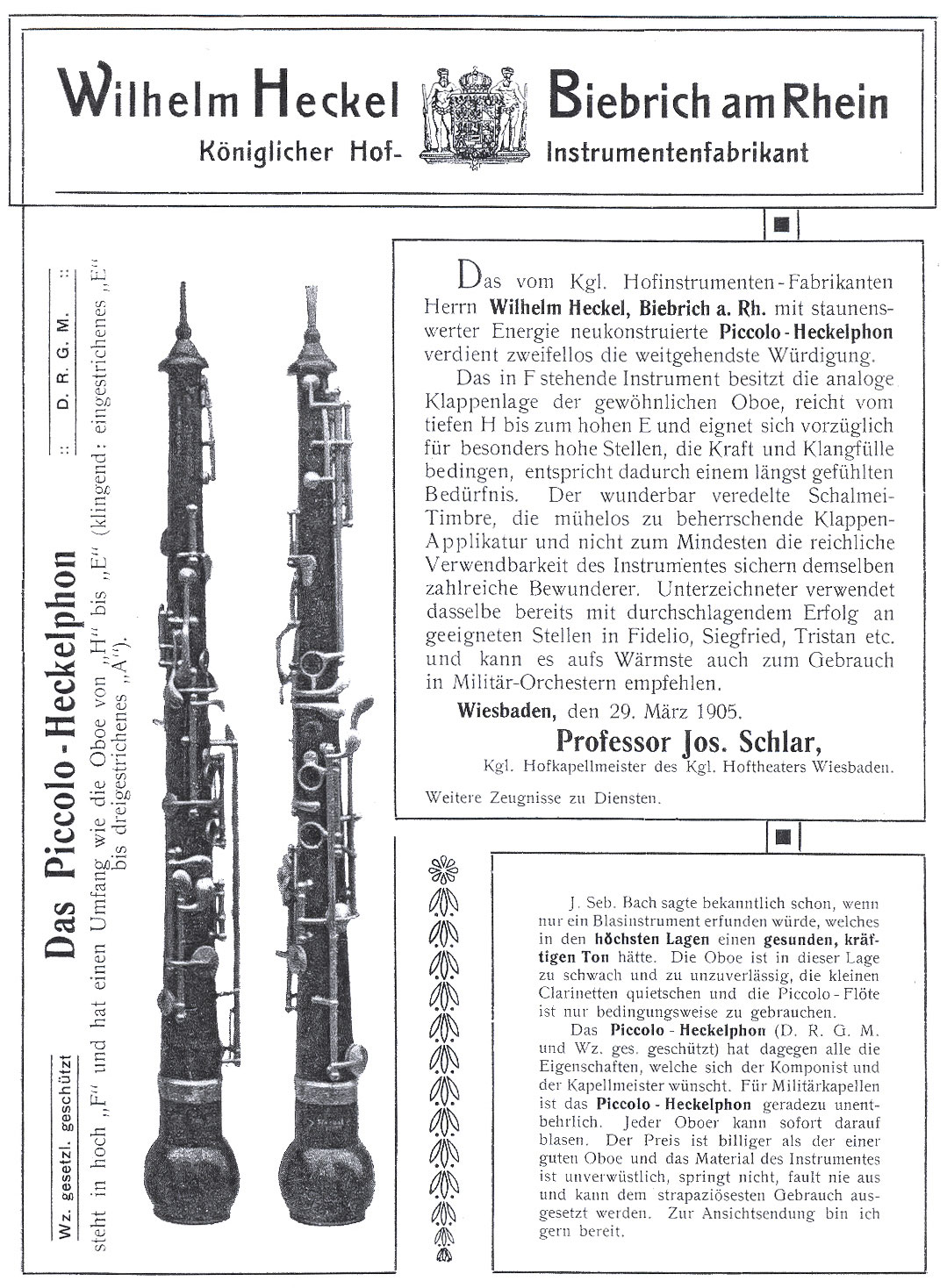
Production and Orders
By 1900, Heckel had produced around 4.000 bassoons and 3.000 other woodwind instruments. With the exception of minor changes to the bore and key mechanism, no significant changes have been made to the instruments. In particular, a consistent fingering was very much in the spirit of musicians and used to promote a worldwide distribution of Heckel instruments.
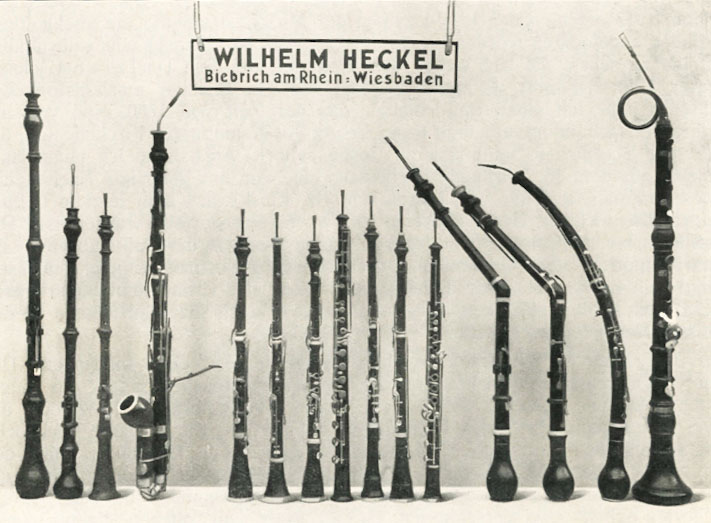
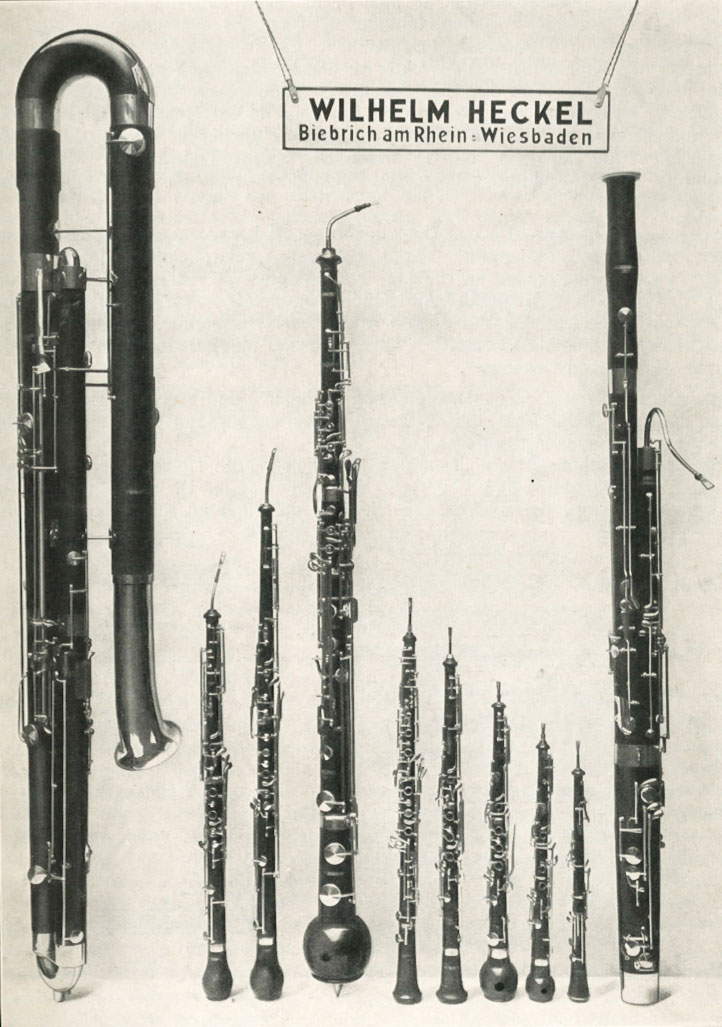
1902 saw the first major contract for the Heckel company from Japan. A total of 54 Heckel instruments were ordered to equip the imperial court orchestra in Tokyo.
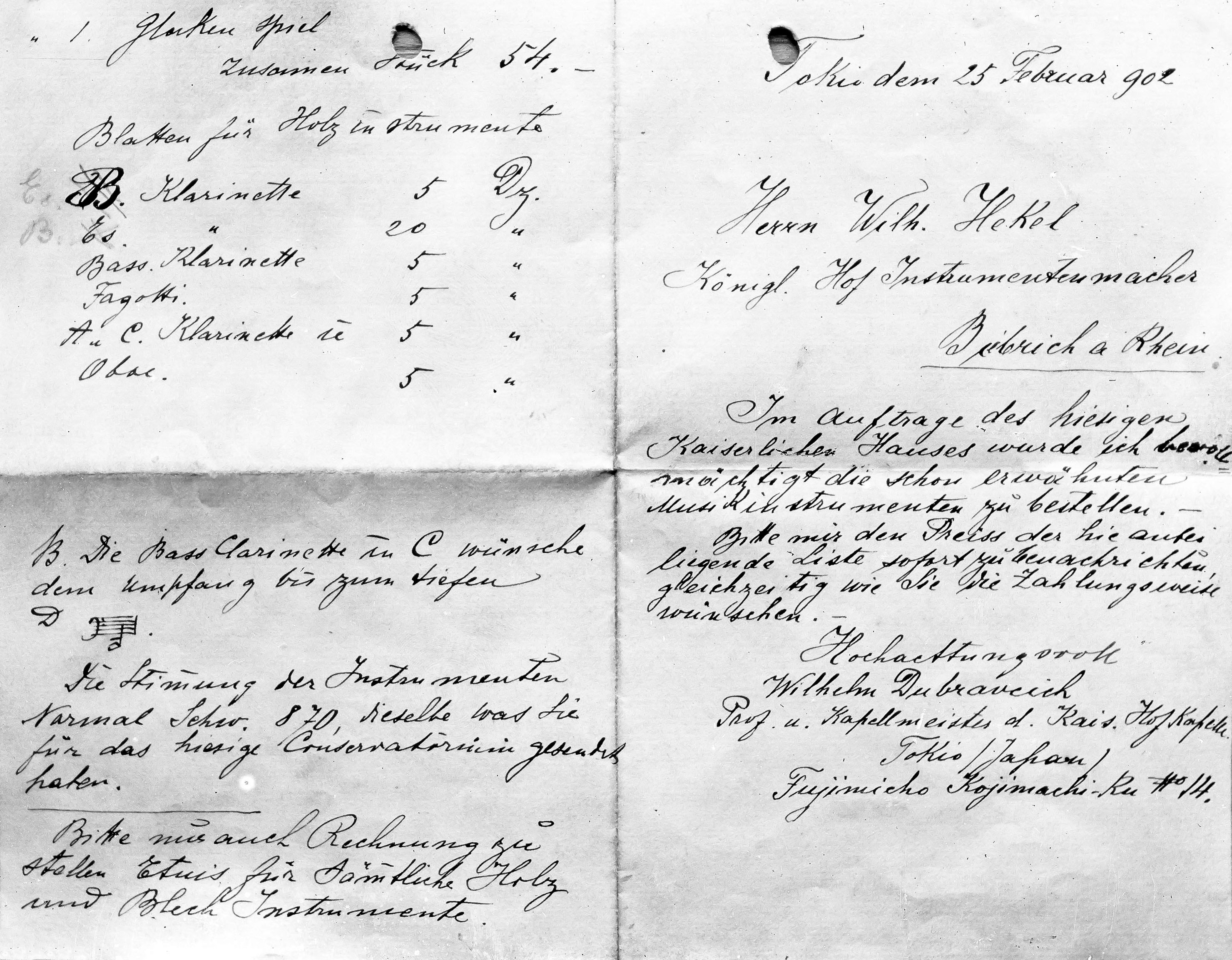
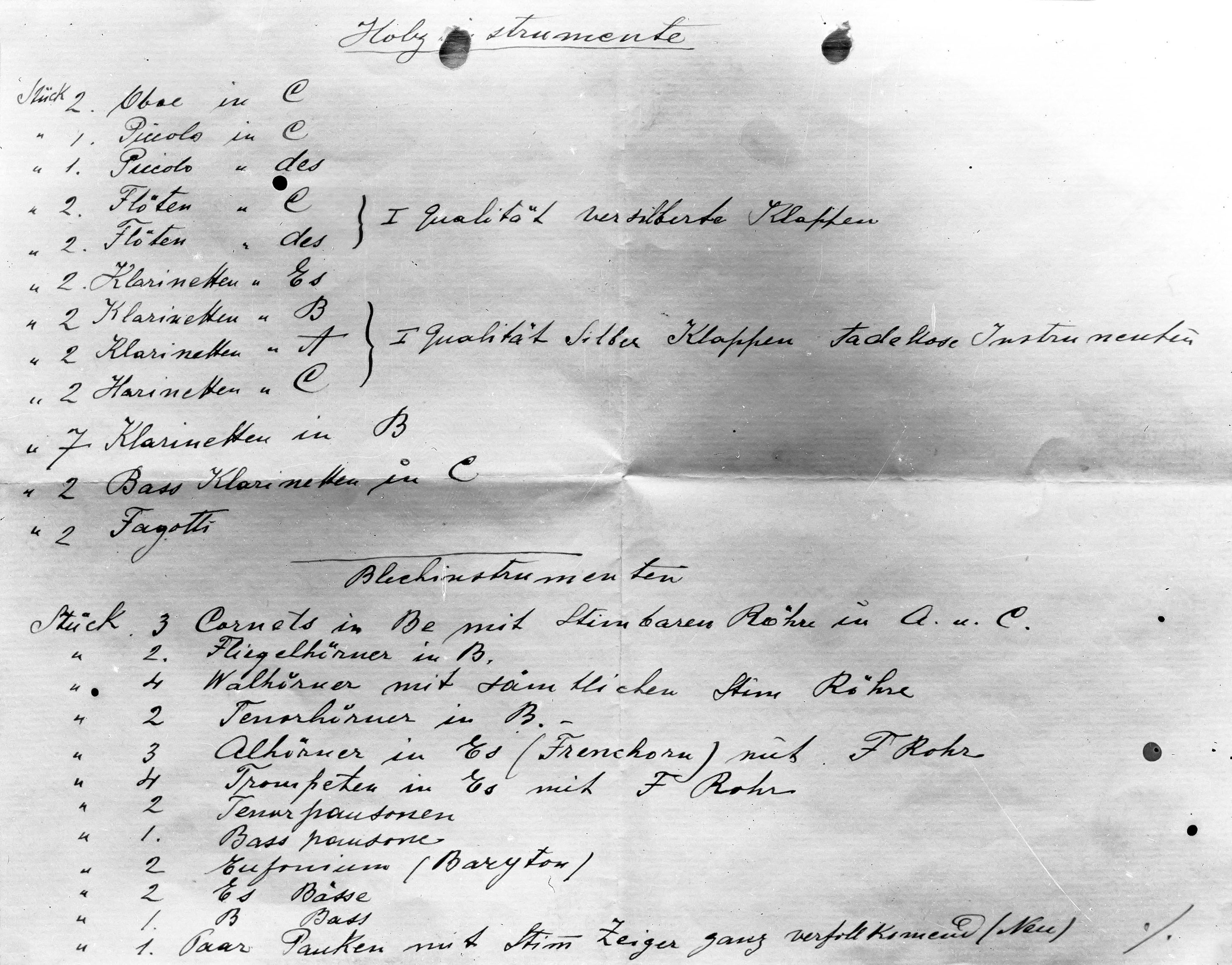
Brass Instruments
Around 1900, Heckel began producing brass instruments for the first time. Thus, Heckel’s product range no longer only included woodwind instruments, but also a multitude of different trumpets and trom-bones, as well as old horns, flugel horns, French horns, cornets, tubas and tambour whistles.

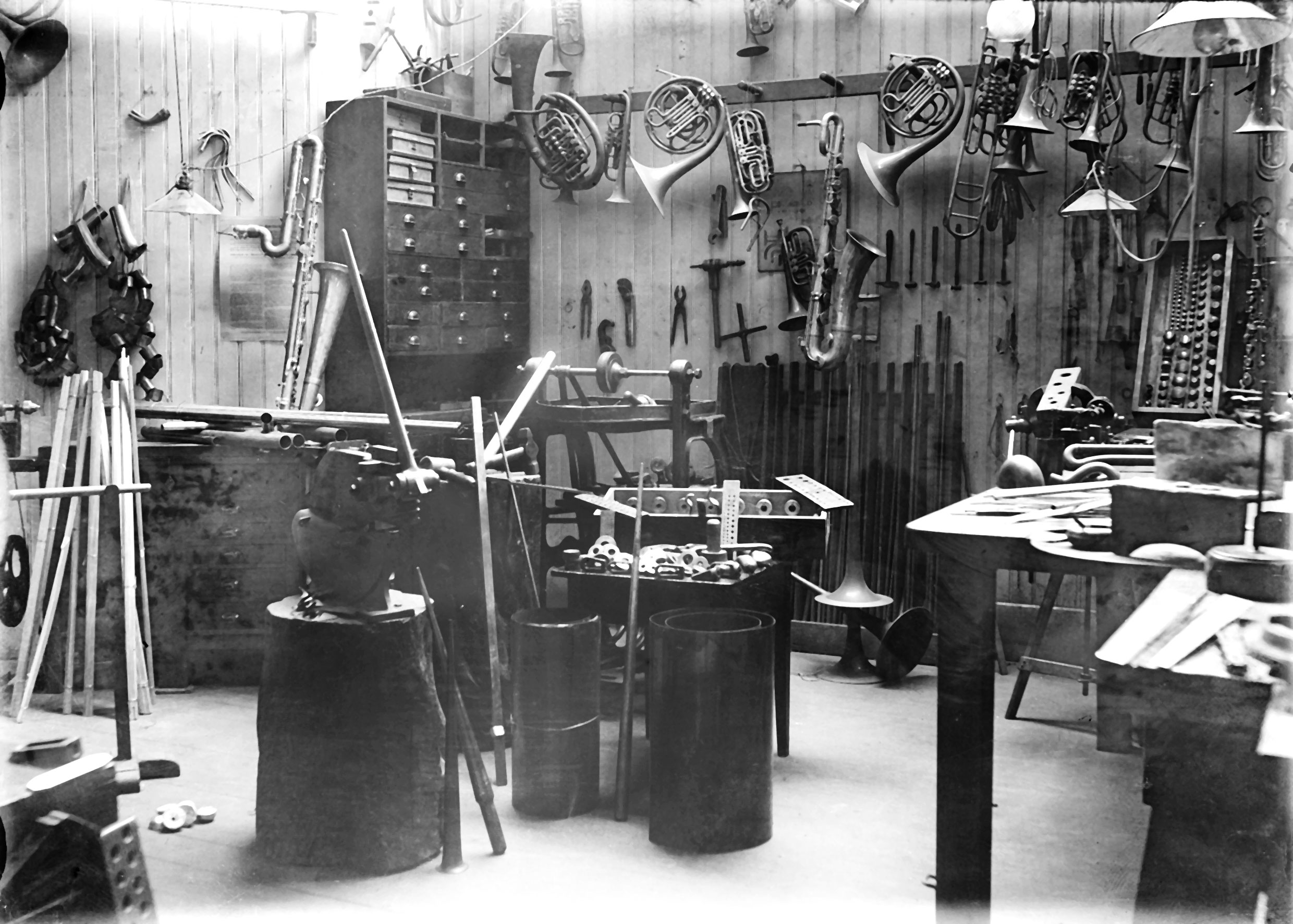
Presentation of the Heckelphone
In September 1904, after a long time in development, the latest invention of Wilhelm Heckel, the heckelphone, was presented for the first time. This instrument represented Wilhelm’s most successful achievement. The development of the heckelphone went back to the suggestion of the composer Richard Wagner. In 1879, at a meeting with Wilhelm Heckel, he longed for a double-reed instrument that sounded one octave lower than the oboe and at the same time had the soft, yet powerful sound of the Alpenhorn.
Unfortunately, Richard Wagner did not live to see the final completion of this instrument. Since there were no compositions for the heckelphone in the beginning, composers now had to be found who were interested in the instrument and who would create new works for it. Here, good contacts with important artists paid off. For example, the instrument was used by Richard Strauss in Salome (1905) and Elektra (1909), and also in pieces by Paul Hindemith and Max von Schillings.
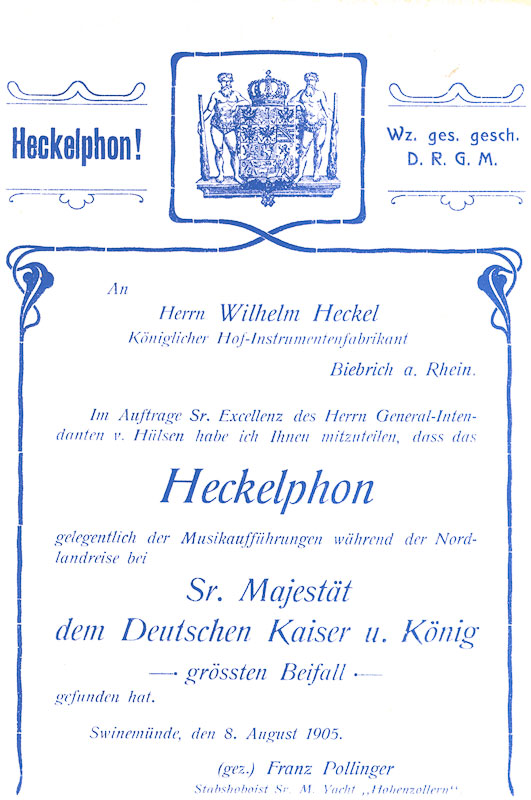
75th Anniversary of the Company
1906 the celebration of the company’s 75th anniversary, which was accompanied by a big festival concert, took place. This was played almost exclusively by the company’s own band, which consisted of employees of Heckel.

Heckel Bassoon Number #5000
In 1911 the Heckel bassoon number #5000 went into production. This instrument was sold to the Royal Court Theatre in Dresden for the bassoonist W. Knochenhauer.
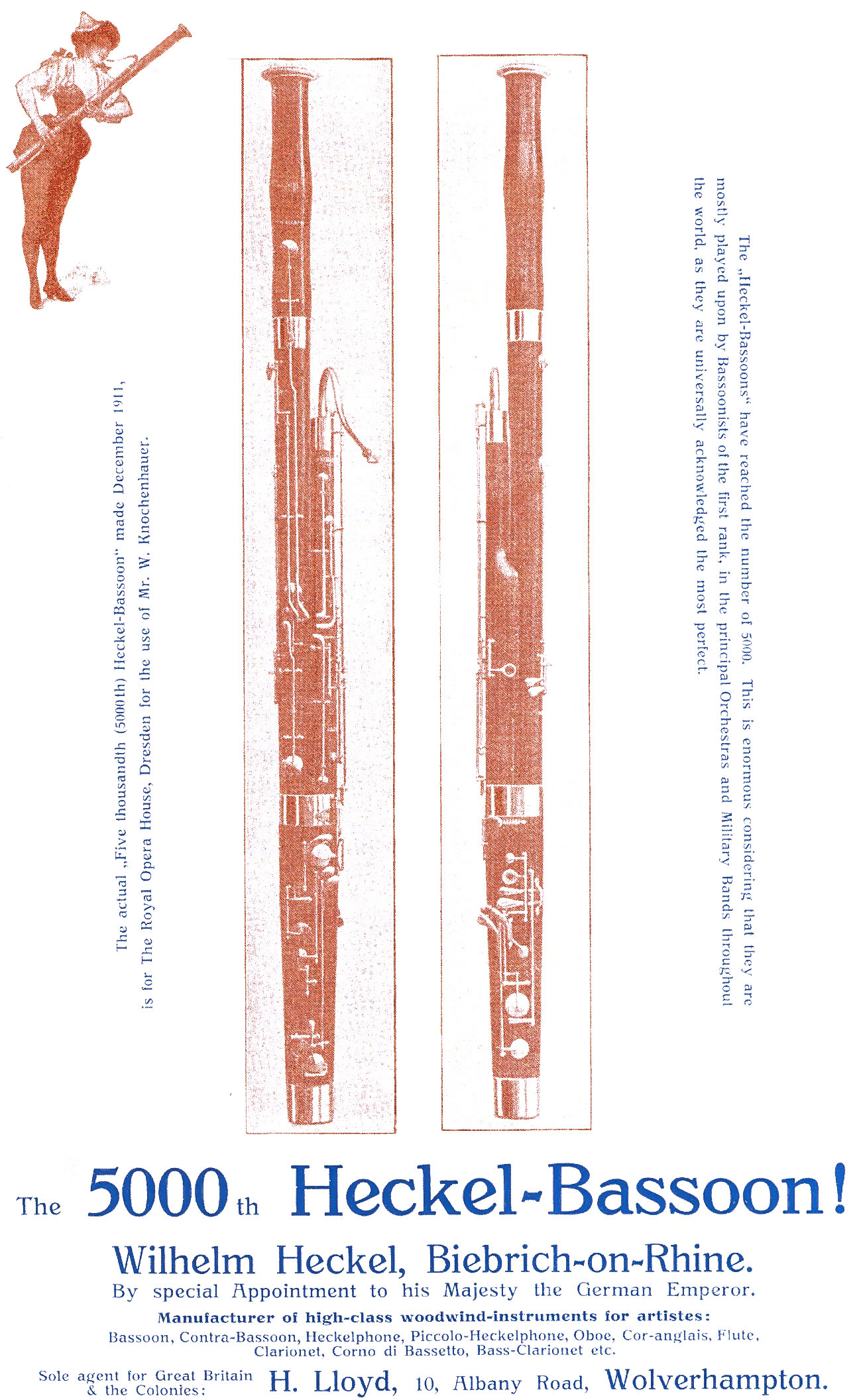
Craft and Trade Show
In 1926 the Heckel company presented its products at the craft and trade show at Biebrich Palace. Here, the company presented a selection of 40 antique Heckel instruments, as well as a variety of other Heckel products. Among the exhibited instruments were not only bassoons, contrabassoons and various heckelphones, but also oboes, clarinets, flutes and much more.
In addition, the individual production stages of a Heckel instrument, from the wood selected to the fin- ished product, were presented with the help of vivid woodcuts, drawings and diagrams.
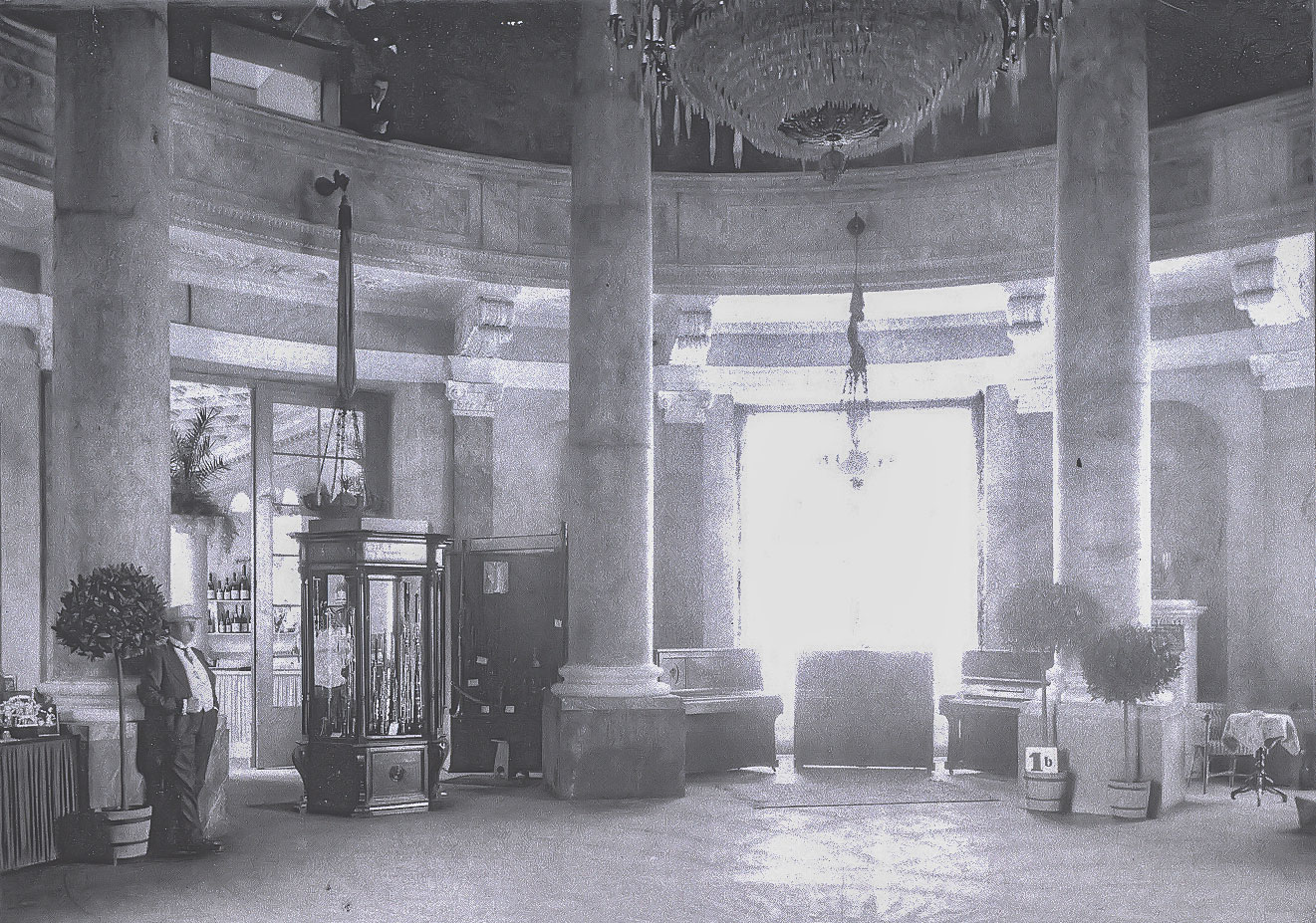

Cross section of a boot joint
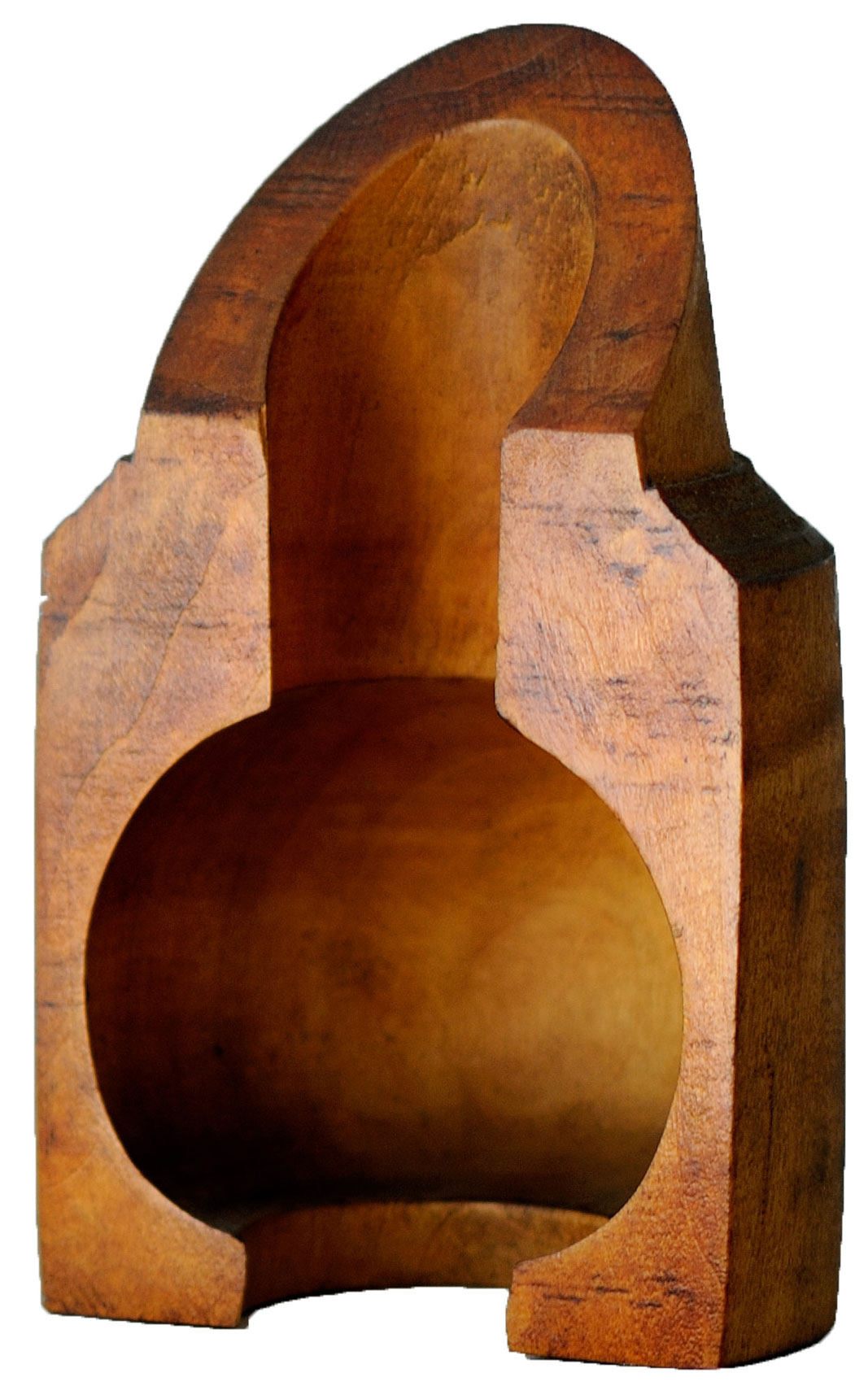
Cross section of a heckelphone bell

Colophone
International Exhibition Music in the Life of Nations
In the summer of 1927, the international exhibition Music in the Life of Nations took place in Frankfurt am Main. Wilhelm Hermann Heckel received the honorary predicate of the Reich Association of German Musicians and Music Teachers for his artistic collaboration and practical presentation of the development of woodwind instruments. At that time, the honorary chairmanship of the association was led by Max von Schillings.
Wilhelm Hermann received the German Reichs-Honour Prize, the Golden State Medal, for the new instruments he exhibited. This was the highest accolade for musical instrument makers.
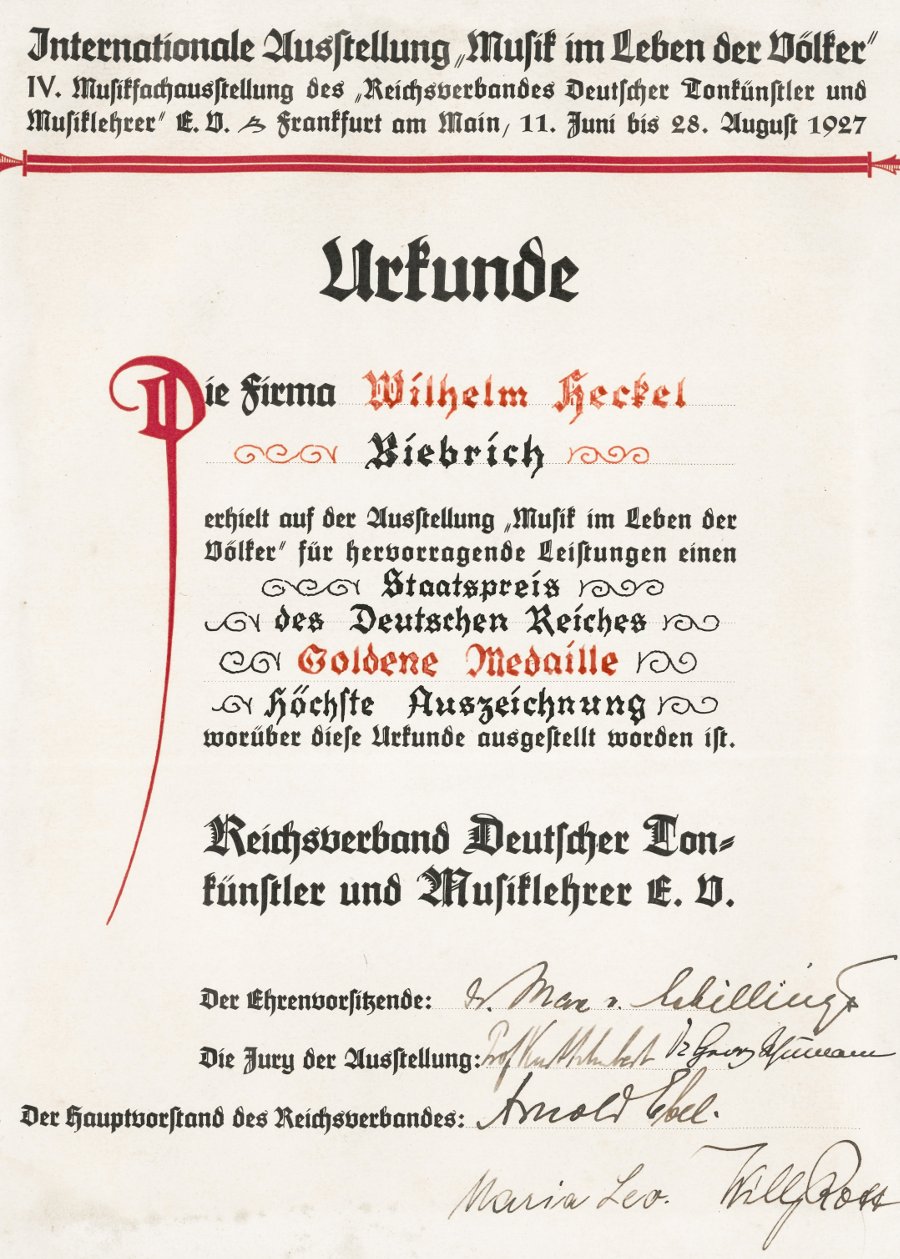
100th Anniversary of the Company
In 1931, the 100th anniversary of the Heckel company took place. Franz Groffy developed a variety of useful mechanisms for Heckel instruments, which he published in a self-created catalogue on the occasion of the company’s 100th anniversary.
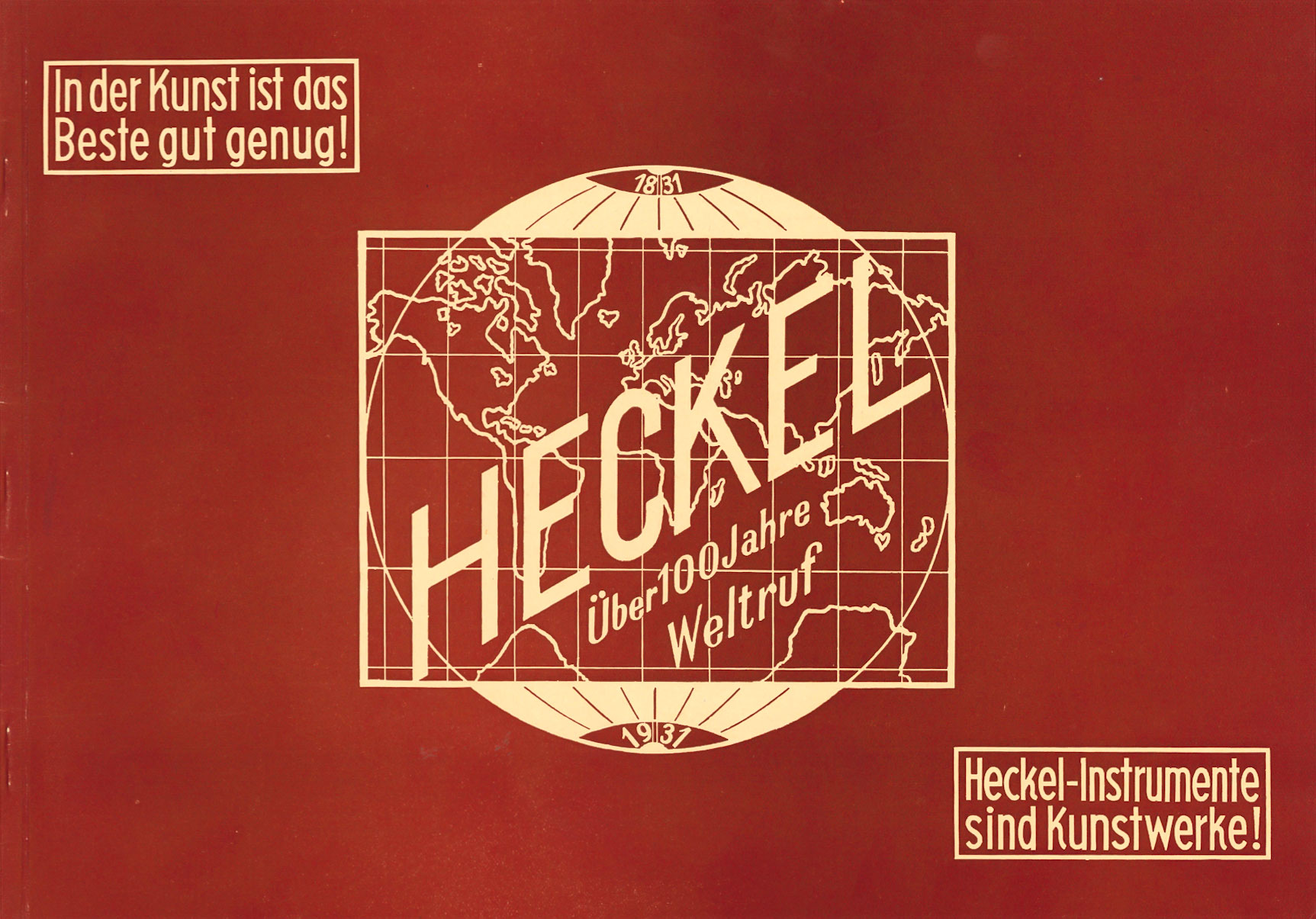
Heckelphone CD with Wolfgang Schottstädt
The mid-1990s saw the first pure heckelphone CD, recorded with Wolfgang Schottstädt, which took place in cooperation with the Hesse State Theatre Wiesbaden.
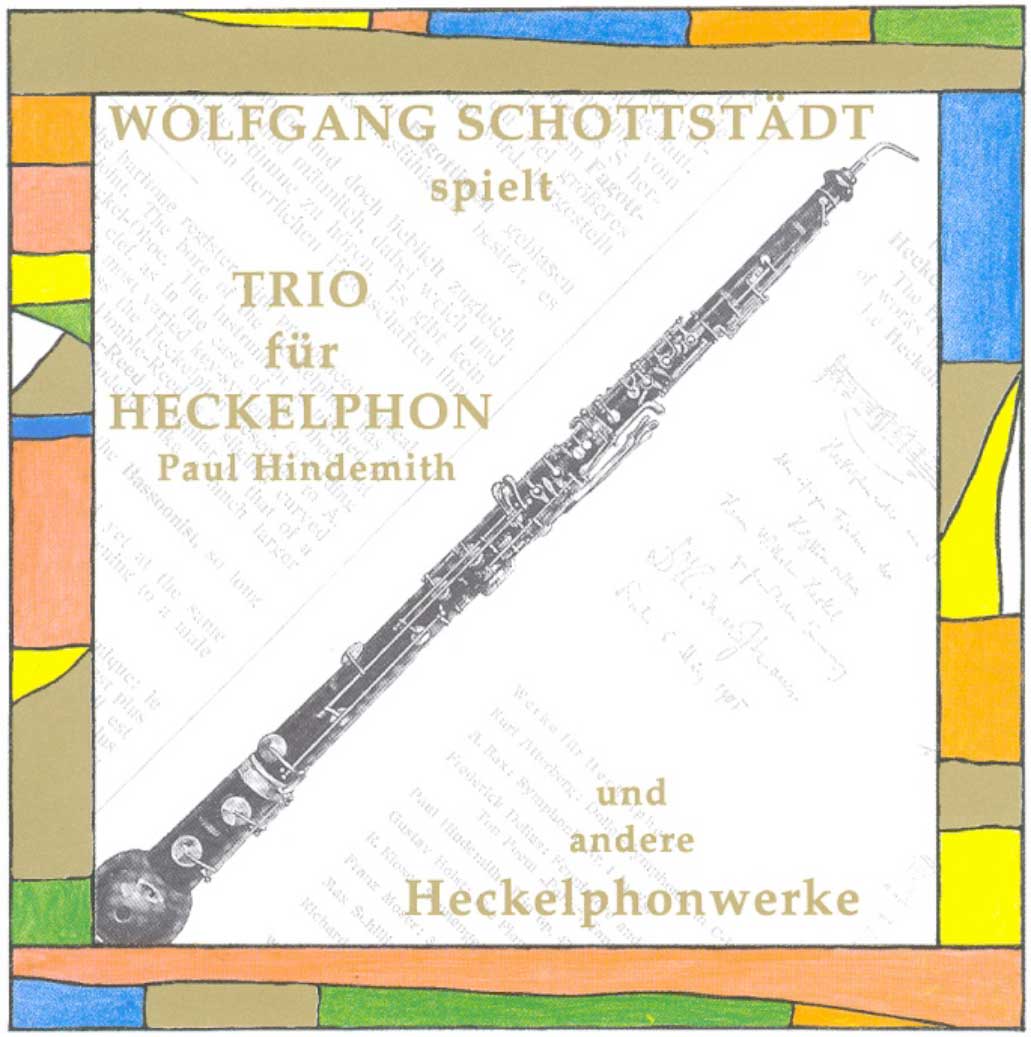
Musical Instrument Award for the Heckel Crest
Due to multiple requests from customers for a high-quality but lower-priced Heckel bassoon, particularly suitable for students, Angelika Lucchetta and Ralf Reiter took up this idea in 1996. The Crest model was then produced and sold by Heckel from January 1997. In 2002, the company was awarded the German Musical Instrument Prize for the Heckel Crest.
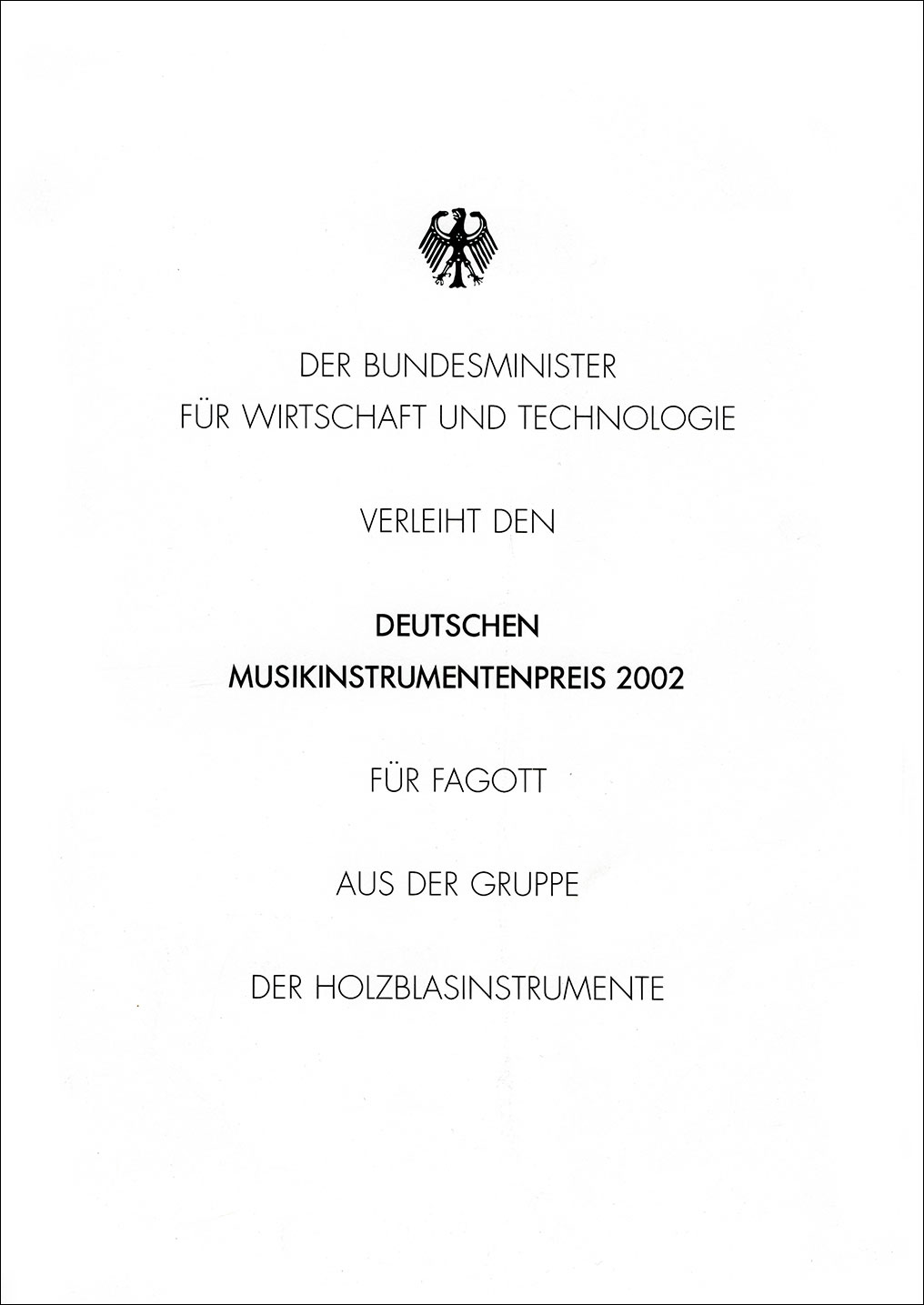
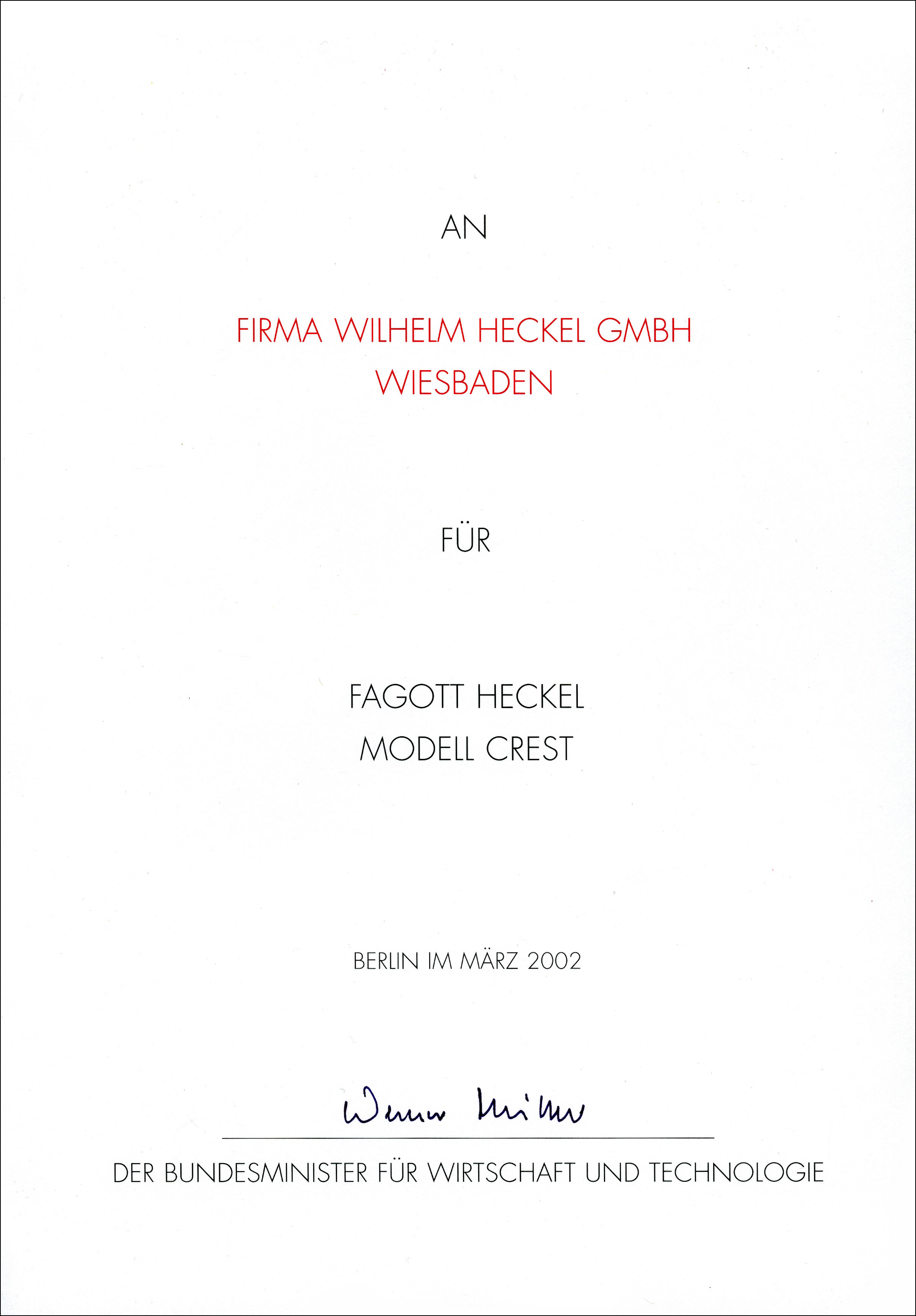
100th Anniversary of the Heckelphone
The summer of 2004 saw the 100th anniversary of the heckelphone. In this context, another CD was recorded with a work by Matthias Bonitz, Venetian Dreams. The world premiere took place article Biebrich Palace.
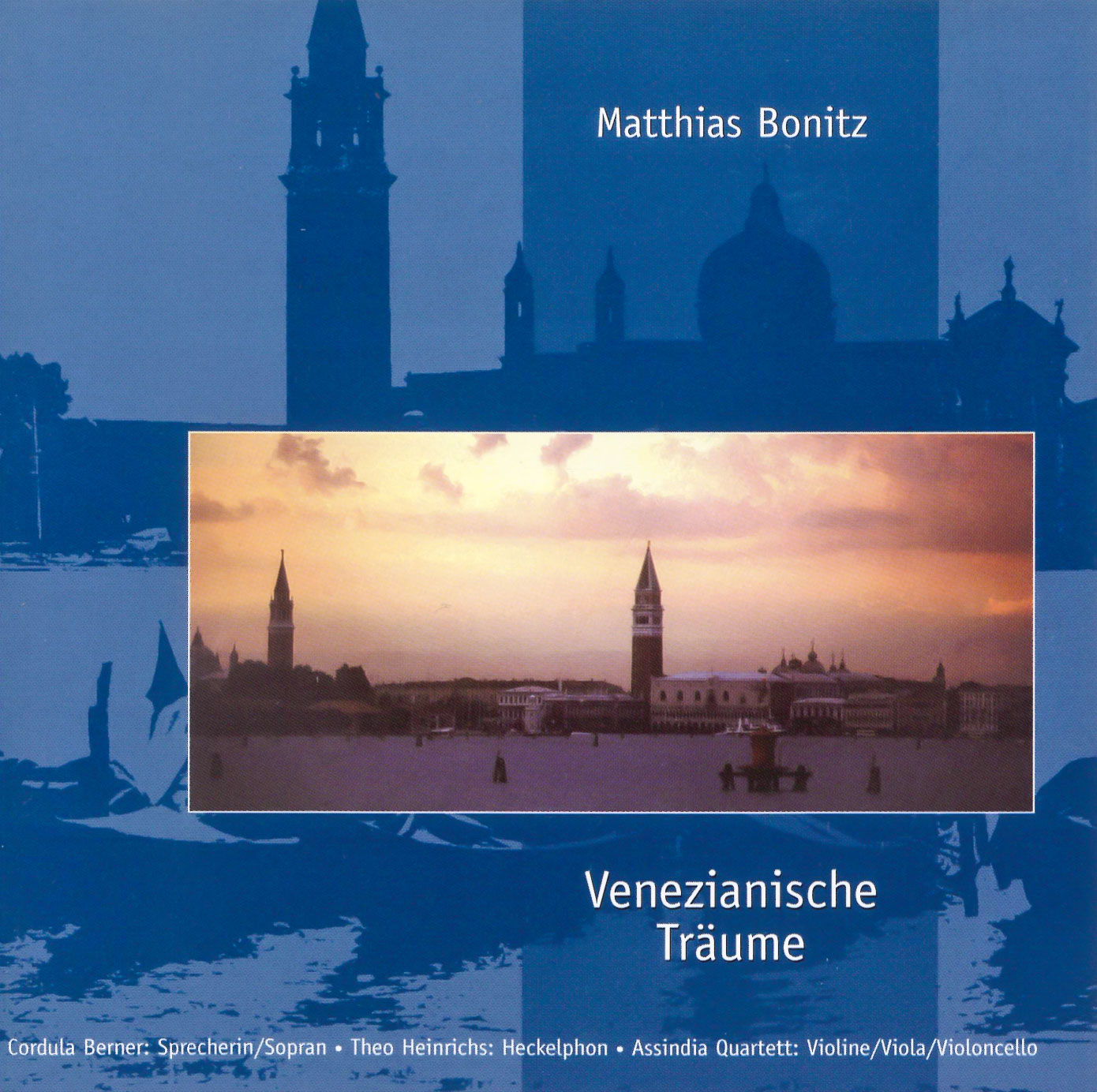
Political Visit
On 29 October 2008, the former Federal President Horst Köhler and the Hessian Prime Minister Roland Koch visited Heckel together with their wives. This visit was a special honour for the entire workforce.
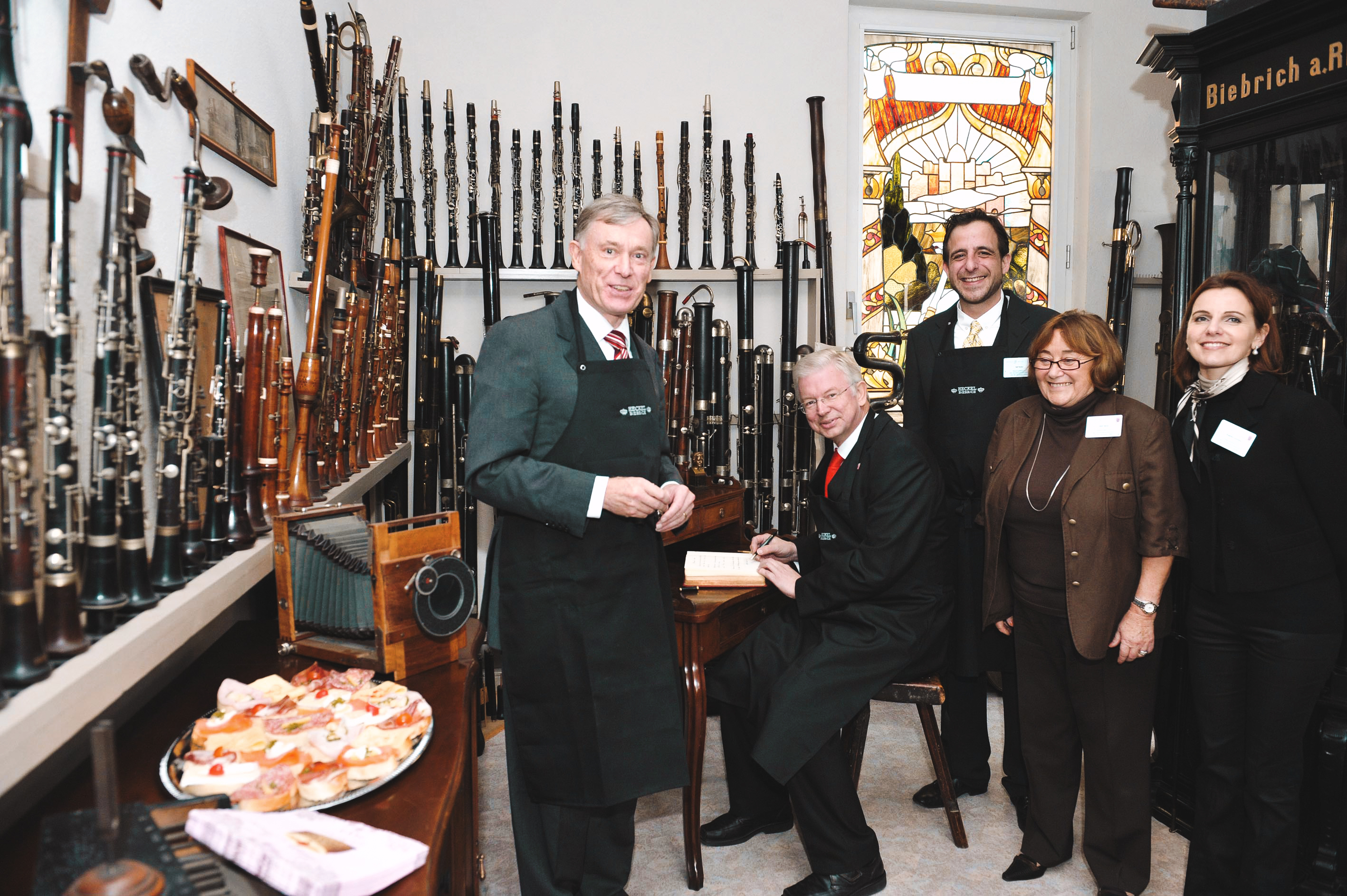

Heckelphone Festival
Although the development of the heckelphone is largely due to the impulse and idea of Richard Wagner, it was primarily the composer Richard Strauss who used this instrument in his major works. A close relationship developed between Strauss and Heckel, which later led to further developments of the instrument, such as the piccolo and the terz heckelphone.
On the occasion of the 120th anniversary of the heckelphone and the simultaneous 160th anniversary of Richard Strauss’ birthday, the Viennese composer Werner Schulze and the heckelphone enthusiast Prof. Holger Hoos, who teaches in Aachen, organized the first heckelphone festival with the support of the Heckel company and the Richard Strauss Institute in June 2024.
The four-day festival, which was attended by heckelphonists and heckelphone enthusiasts from all over the world, began at the Eberbach Monastery in Eltville am Rhein, where seven heckelphones could be heard simultaneously in the historic basilica for the first time.
The Heckel company also took the 120th anniversary and the gathering of such a large number of international guests as an opportunity to finally present the new heckelphone, which had been redesigned in the previous two years, to the public. For the first time, the participants had the opportunity to test the new instrument extensively and to enter into dialog with the instrument makers and discuss the various new features of the instrument.
The Heckelphone Festival culminated in Garmisch-Partenkirchen, where the Richard Strauss Days were taking place at the same time. In addition to panel discussions with contemporary heckelphone composers and a book presentation on the instrument, various heckelphones were also exhibited. In addition to the heckelphone redesigned in 2024, one of the first heckelphones to be produced was also on display. A special highlight was the exhibition and demonstration of one of the few piccolo heckelphones and one of the extremely rare terz heckelphones.
The Heckelphone Festival ended with a successful final concert at which many of the international festival guests presented their instruments in various formations – accompanied by piano and string quartet, among others.